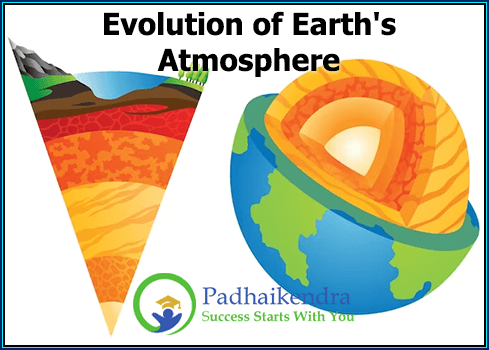The evolution of Earth’s atmosphere is a complex and ongoing process that has taken place over billions of years. The early Earth had no atmosphere, but over time, volcanic activity and other processes led to the development of an atmosphere. The atmosphere that we know today has gone through several stages of development, including the formation of the first atmosphere, the Great Oxygenation Event, and the formation of the ozone layer.
The First Atmosphere: The early Earth’s atmosphere was primarily composed of hydrogen and helium gas. This atmosphere was likely stripped away by the solar wind, which is a stream of charged particles that emanate from the Sun. Volcanic activity on the Earth’s surface eventually led to the development of a new atmosphere.
The Second Atmosphere: The volcanic activity on the Earth’s surface released gases such as water vapor, carbon dioxide, nitrogen, and methane. These gases formed a new atmosphere, which was much denser than the previous one. This atmosphere also contained small amounts of oxygen, which were produced by photosynthetic bacteria.
The Great Oxygenation Event: Photosynthetic bacteria began to produce oxygen as a byproduct of their metabolic processes. This oxygen reacted with the iron in the Earth’s oceans, creating iron oxide. This process removed large amounts of oxygen from the atmosphere, which eventually led to the Great Oxygenation Event. This event occurred approximately 2.4 billion years ago and led to the formation of the ozone layer, which protects the Earth’s surface from harmful ultraviolet radiation.
The Ozone Layer: The ozone layer is a region of the Earth’s atmosphere that contains high concentrations of ozone gas. This layer is located in the stratosphere, which is the second major layer of the Earth’s atmosphere. The ozone layer absorbs harmful ultraviolet radiation from the Sun, preventing it from reaching the Earth’s surface. This layer is essential for life on Earth, as it protects living organisms from the harmful effects of ultraviolet radiation.
Today, the Earth’s atmosphere is composed of about 78% nitrogen, 21% oxygen, and trace amounts of other gases such as argon, carbon dioxide, and neon. Human activities, such as the burning of fossil fuels and deforestation, have led to an increase in the concentration of greenhouse gases in the atmosphere, which has resulted in global warming and climate change. Understanding the evolution of Earth’s atmosphere is essential for predicting and mitigating the effects of climate change.





